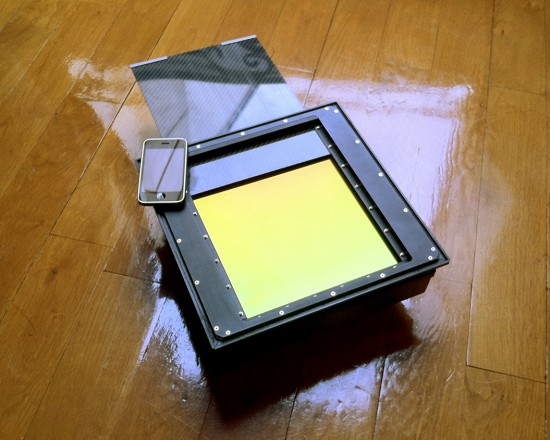Format is used as a sizing convention in a lot of different media. Aside from film, everything from books to bricks follow sizing "formats". Where you get the idea that format can only refer to film and not to geometric dimensions is where you go wrong.
The covention of breaking films into format sizes came from when prints were made by contact without use of an enlarger. The film format would thus be exactly the same as the size of the print—so if you wanted large prints, you would have to use a large camera and corresponding film format
The size of the resulting digital capture can only be measured by the pixels in the final image. which are independant of the sensor size.
I don't have the "wrong idea" I have my understanding which you don't agree with.
Is a 35mm sensor "small format film sized"? Sure.
Can my old 35mm lenses have the same FOV as a 35mm film cam? Sure.
Do I create a print off of my sensor when I am finished with a photo? No.
Do I use an enlarger? Yes, my iMac.
All I get from this is you are using the term "format" wrongly.
Look up the word on Websters. The only reference to the word in regards to size is this.
"the shape, size, and general makeup (as of something printed)"
If film and cameras weren't referred to by format for printing, why do you believe the format of the film or camera mattered?
You seem to have forgotten the very first thing I linked in this thread:
Note the part that says this stuff is valid for both film and digital cameras. Note that small format here includes 35mm and APS cameras (you know, digital).
A better more detailed entry is on Wikipedia. And there the definition refers only to the physical dimensions. For example,
"
Formats
The most common large format is 4×5 inches, which was the size common cameras used in the 1930s-1950s, like the
Graflex Speed Graphic and Crown Graphic, among others. Less common formats include quarter-plate, 5×7 inches, and 8×10 inches (20×25 cm); the size of many old 1920s
Kodak cameras (various versions of Kodak 1, 2, and 3 and Master View cameras, to much later Sinar monorail studio cameras) are 11×14 inches, 16×20 inches, 20×24 inches, various panoramic or "banquet" formats (such as 4×10 and 8×20 inches), and metric formats, including 9×12 cm, 10×13 cm, and 13×18 cm and assorted old and current aerial image formats of 9×9 inches, 9×18 inches (K17, K18, K19, K22 etc.), using roll film of 4, 5, 6, 7, 9, or 10 inches width or digital sensors,
view cameras (including
pinhole cameras), reproduction/process cameras, and x-ray film and digital cameras.
Above 8×10 inches, the formats are often referred to as
Ultra Large Format (ULF) and may be 11×14, 16×20, or 20×24 inches or as large as film, plates, sensors, or cameras are available. Many large formats (e.g., 24×24, 36x36, and 48x48 inches) are horizontal cameras designed to make big negatives for contact printing onto press-printing plates.
The
Polaroid 20×24 camera is one of the largest format
instant cameras currently in common usage and can be hired from Polaroid agents in various countries. Many well-known photographers have used the 235 pounds (107 kg), wheeled-chassis Polaroid."
All of the difference in formats is defined according to
size. The use of film is coincidental.



